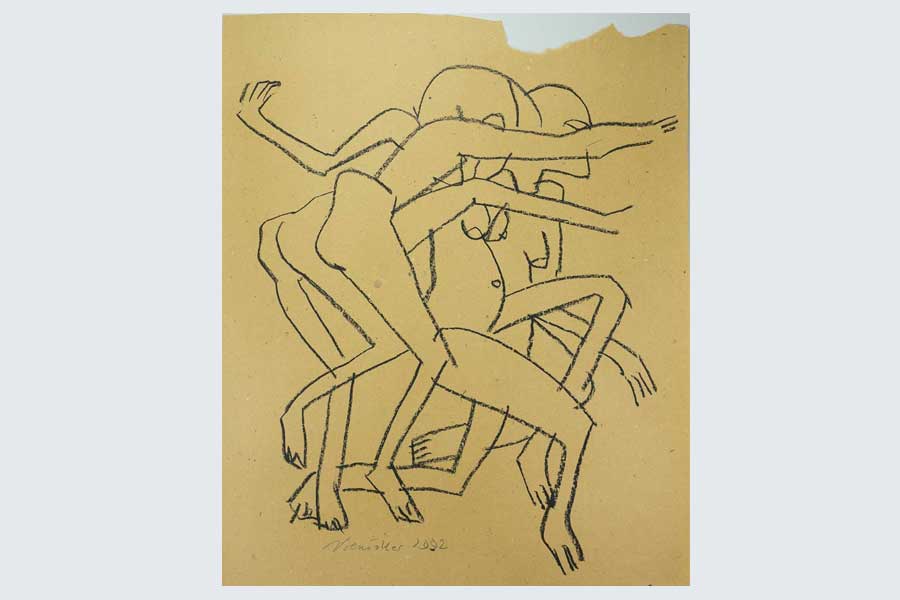The Wilhelm G. Niemöller art collection includes some 3000 individual examples of various artistic categories. It represents a wide variety of works by this artist, which includes the central categories such as wooden sculptures, monotypes and silhouettes as well as numerous drawings and examples of other artistic techniques.
The collected works in the artist’s estate represent various creative phases of Niemöller’s work and thus mirror his artistic development from the early 1950s until his death in 2017.
The wooden sculptures
Niemöller’s wooden sculptures stem from the period between the 1970s and the 2000s. The various objects were created from industrial and handmade wooden finds and have frequently been assembled. In sum they constitute an anthropomorphic whole.
Wood is an organic material which combines originality on the one hand, and often quite evident previous functionality on the other, which naturally creates artistic tension. This appeals to the viewer who sees various figures which, taken as a whole, seem to present him/her with a mirror image of the wide range of human experience.
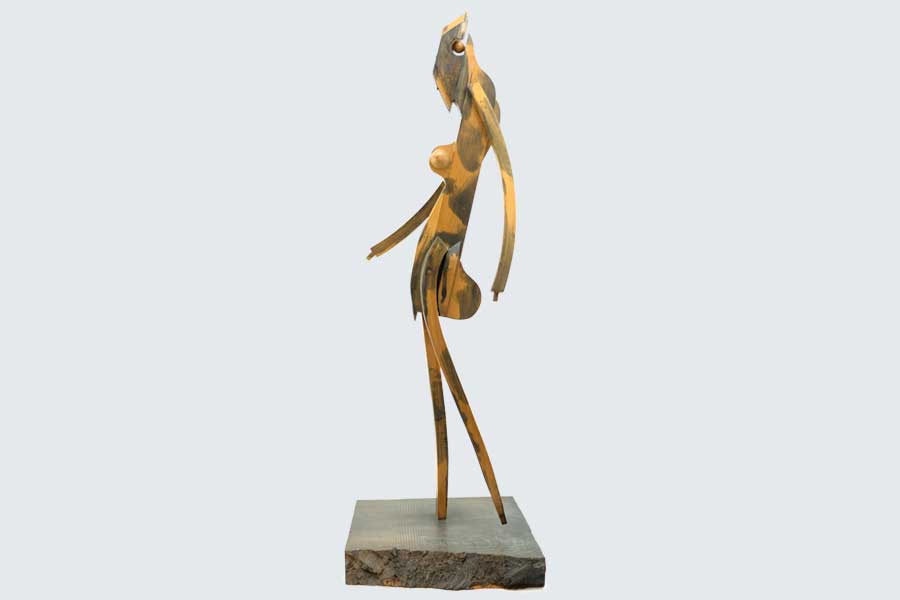
The monotypes
The monotypes on the basis of oil are mainly from the 1960s. These works often hint at the social and political concerns of this period, including major issues like the relationship between the sexes, violence and social hierarchies. Even so, the overall effect of the pictures is timeless. The representations, which are mostly multicoloured, are noteworthy in terms of their starkly formal composition, while the statement they make is surprisingly current.
To the monotypes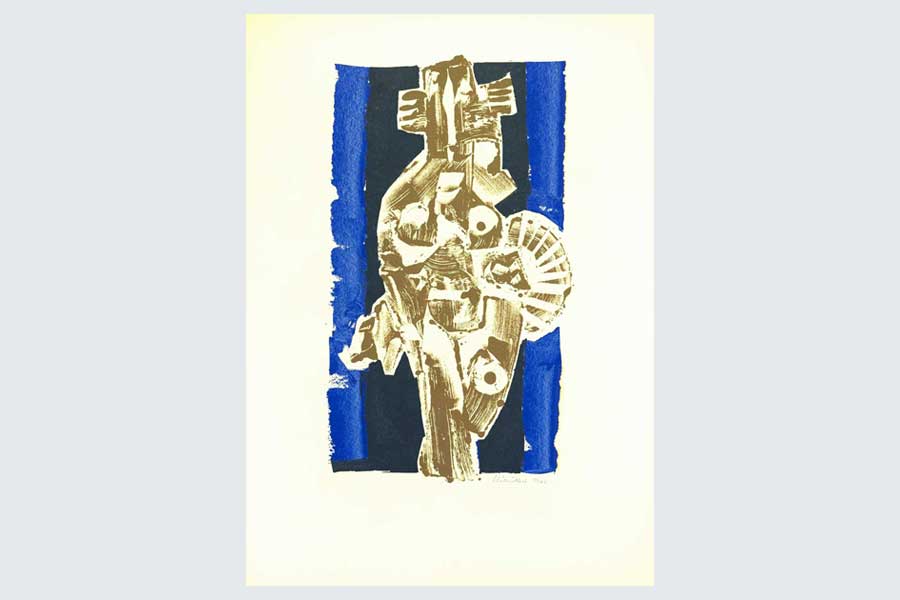
The silhouettes
At the end of the 1990s Niemöller began to explore the adaptability of the silhouette. The special effects of the mostly representational depictions are partly achieved through the usage of black spray paint, with which he prepared the material to be used for the silhouette. The original two-dimensional material has taken on a life of its own owing to this preparatory treatment and his carefully calculated choice of form when cutting the silhouettes.
The resulting artistic works strike the viewer as being particularly vivid. The silhouette appears to be a sculpture and simultaneously plays with the imposed or supposed rules of realistic representation.
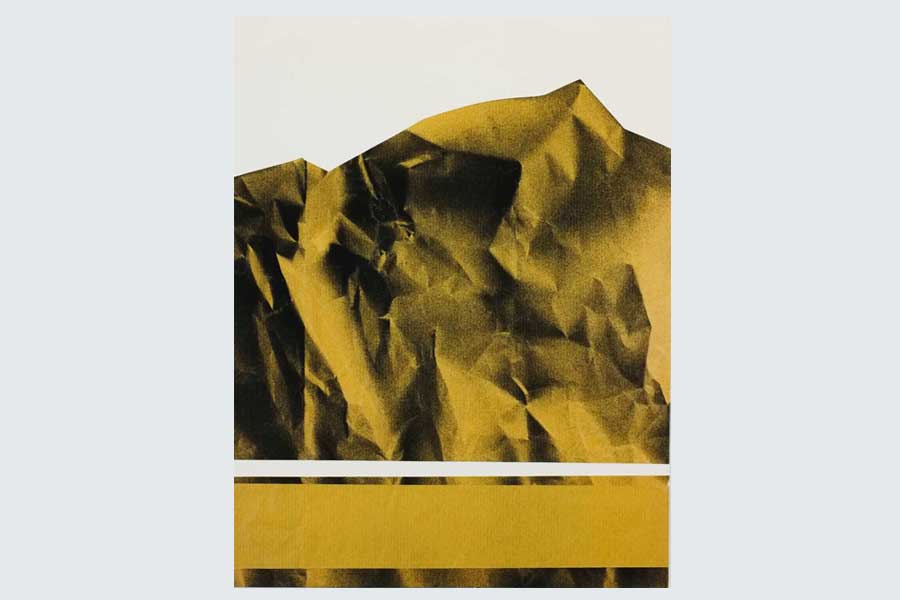
The overpaintings
From the start of the new millennium Niemöller took up the challenge of overpainting. His works in this category were created using black felt tip pens exclusively on a background of individual pages taken from catalogues of his own earlier exhibitions.
The creative points of reference here stem from the possible change of perspective while simultaneously working with loose pages and a fixed layout of text and illustration as well as the reproduction of his own exhibited works. What happens is that the original basis, which supplies certain rules in terms of form, is open to a very wide range of new interpretations. This combination results in the viewer’s observing a playful easiness and freshness when he/she studies the works.

Small scale sculptures
For decades Niemöller’s artistic works have included bronze and iron sculptures. Many of the mostly conveniently small objects are clearly identifiable as being connected to Classic Modernism in terms of their shape and materiality.
Their abstract, partly architecturally influenced forms are charismatic works of art owing to the balance between proportion and perspective.
In contrast, there are also sculptured figures which fascinate because they deliberately transgress the viewer’s expectations. Often this is achieved through a single artistic strategy employed by Niemöller, which gives these objects their charm and artistic individuality.
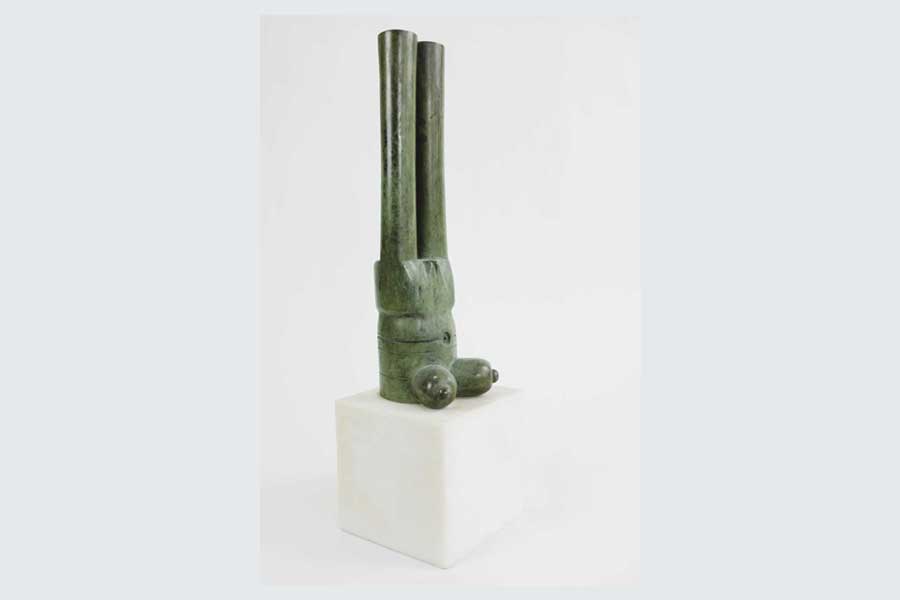
Spray paintings
In the 90s while working on his sihouettes Niemöller also experimented with the artistic possibilities of spraying. The materials he used were black spray paint on a ground of white fabric, packing paper or drawing paper.
The chief technique he employed was manipulating the base material before spraying. Deliberate creasing, folding, covering with foreign substances etc. prepared for the result on the level surface but was never entirely predictable. Hence calculated randomness plays a significant role in the final artwork.
The spray paintings achieve their effect by hinting at the play of light and shadow, which inspires the powers of association.
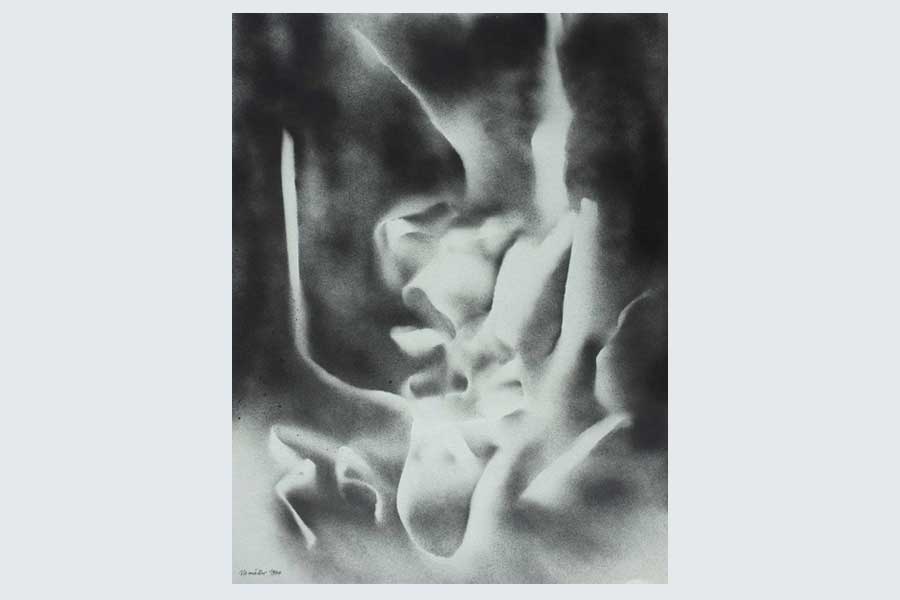
Ink drawings
The pen and ink drawings, in which in some cases titanium white is also used, originated in the 80s and 90s. The focus of these drawings is individual figures, often female nudes, without any additional features.
Niemöller has used quick, certain brush strokes, a minimalized painterly gesture which focuses on the subject. This expressive presence, which concentrates on the subject, makes these sheets particularly attractive.
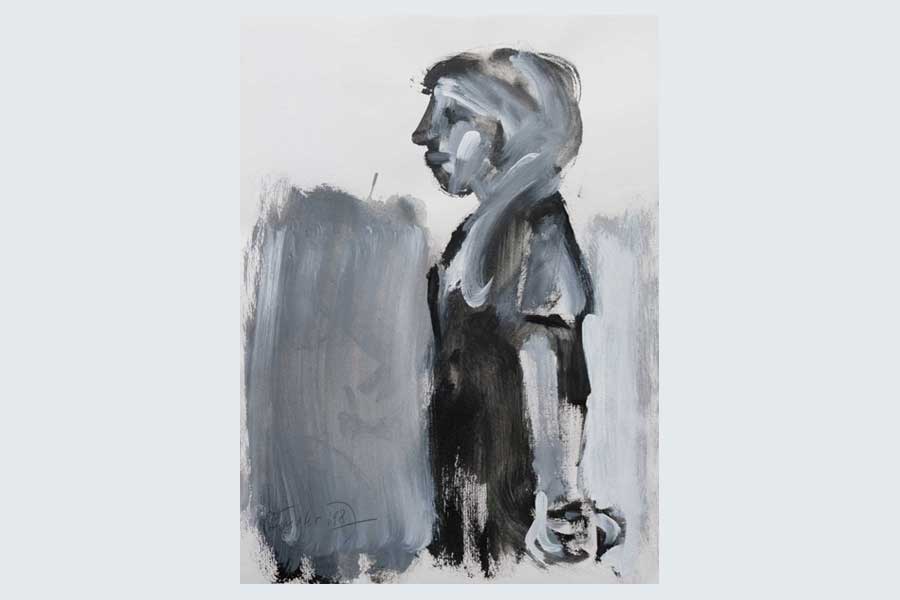
Collages
The abstract collages Niemöller created in around 1990 are clearly connected to a proven strategy of his: As is the case with his wooden sculptures, remnants of everyday items (here fabric and paper) are used as materials.
The artistic processing of selected leftovers to create new aesthetic objects with their own identities is also evident in the collages. What is important here is the specific application of colour.
Due to their unpretentious nature the collages appear open, partly floating, partly brilliant, which contributes to the development of their atmospheric effect.
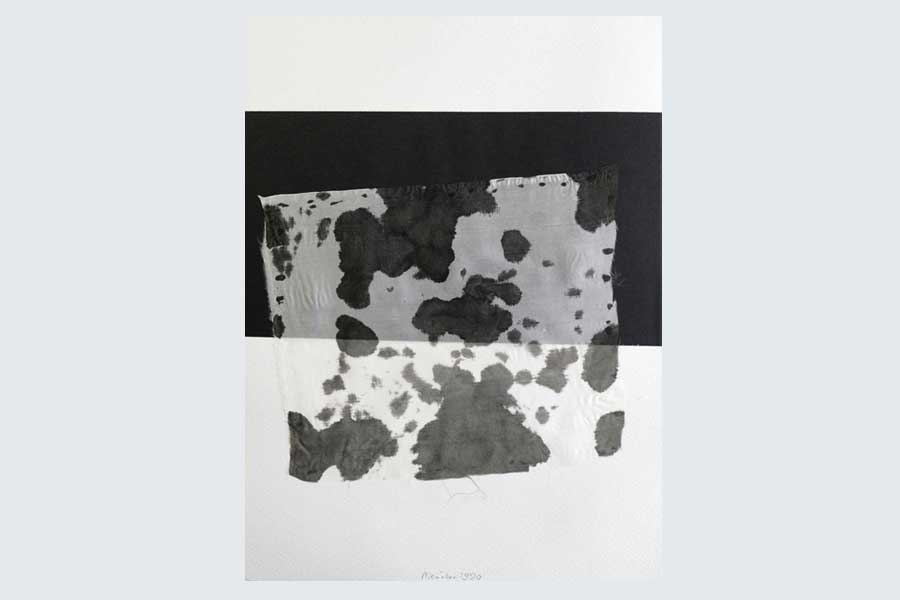
Chalk drawings
At the onset of the 90s Niemöller produced an extensive body of chalk drawings, mostly on a background of packing paper.
Ranging from the black and white to the coloured, from the figure to the representational, from the form to the pattern, from the playful to the serious, Niemöller has developed his themes with a creative verve which is communicated via his drawings.
